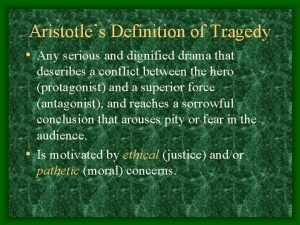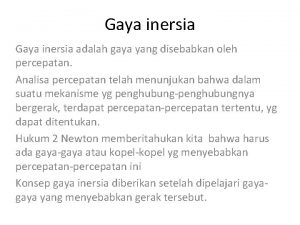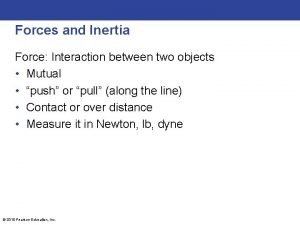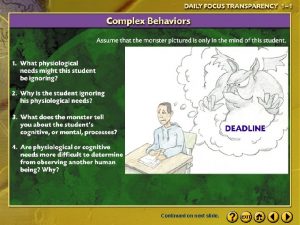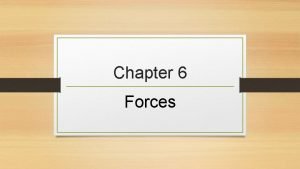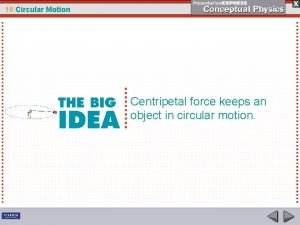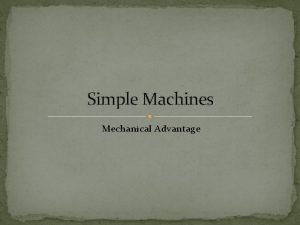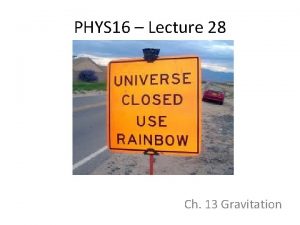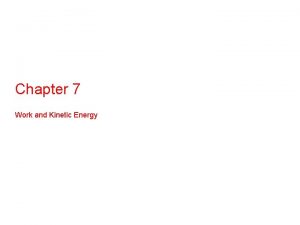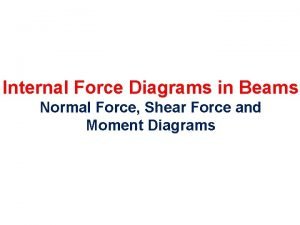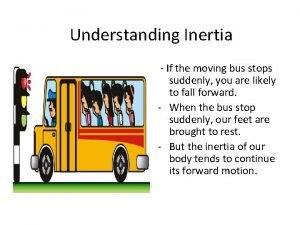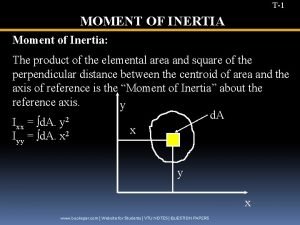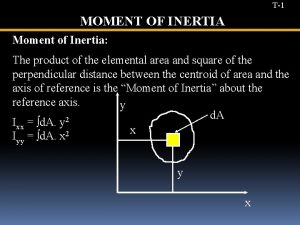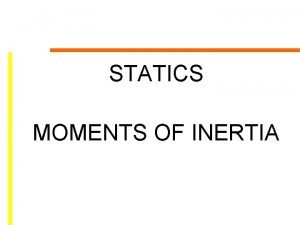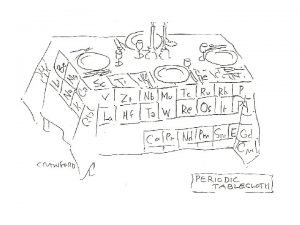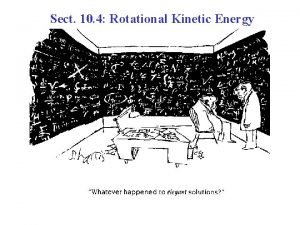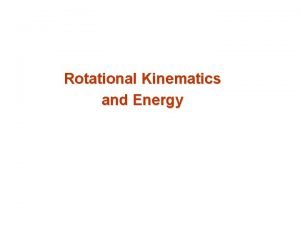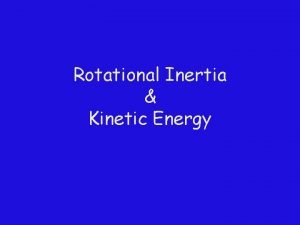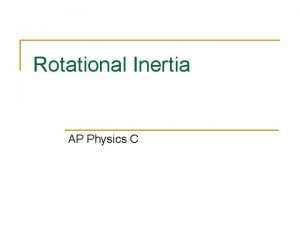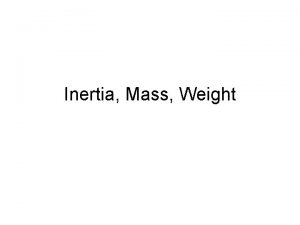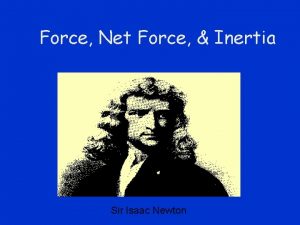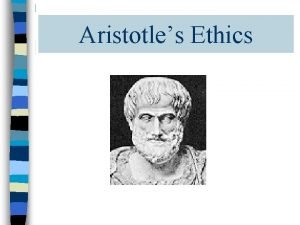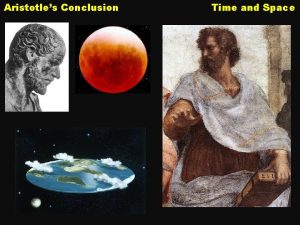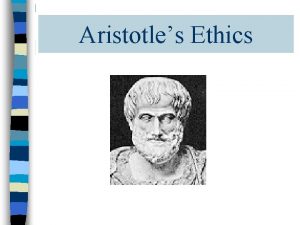Inertia 1 Force 1 Next Slide Inertia Aristotles










































- Slides: 42

Inertia 1 Force 1 Next Slide Inertia • Aristotle’s old belief • Constant speed motion requires constant force • Galileo’s law of inertia Photo • It is as natural for a moving object to keep moving with a constant speed along a straight line as for a stationary object to remain at rest.

Inertia 2 Force 1 Next Slide Inertia and Newton’s first law of motion • Galileo’s thought experiment Diagrams • Newton’s first law of motion: • Every object remains in a state of rest or uniform speed along a straight line (constant velocity) unless acted on by an unbalanced force. Photo

Inertia 3 Force 1 Next Slide Inertia and Newton’s first law of motion • Force : changes the state of rest or uniform motion of an object (vector! Why? ) • Inertia : the resistance of an object to a change in its state of rest or uniform motion in a straight line. • Mass : is a measure of inertia (scalar! Why? ) • Mass can be considered as a measure of inertia • Inertial balance Diagrams

Force 1 Next Slide Friction • Origin of wrong concept of Aristotle’s old belief • Nature of friction Diagrams • Direction : opposite to the motion (velocity) • Examples of smooth surface Photo • Demonstration of Newton’s first law on smooth surfaces

Force 2 Force 1 Next Slide Unbalanced force (resultant force, net force) • Falling of object in liquid (terminal velocity) Photo • Its relation with Newton’s first law of motion Diagram • Friction-compensated inclined plane • Experiment to study resultant force • Results Calculation Photo Diagram

Force 3 Force 1 Next Slide Newton’s second law of motion • Acceleration is not zero if the resultant force is not zero. • Deductions from the results 1. Acceleration force (mass is constant) 2. Acceleration 1/mass (force is constant) 3. F ma or F = constant ma

Force 4 Force 1 Next Slide Newton’s second law of motion • Definition: The acceleration of an object is directly proportional to, and in the same direction as, the unbalanced force acting on it, and inversely proportional to the mass of the object • Unit of force : Newton (N)

Force 5 Force 1 Next Slide Newton’s second law of motion • 1 newton of force will give a mass 1 kg an acceleration 1 • constant in F = constant ma becomes 1 • Mathematical form of Newton’s second law • Direction of resultant force = direction of acceleration

Weight & Mass 1 Force 1 Next Slide Weight and Mass • Definition: The force of gravity acting on the object is called the weight of the object and is measured in newton • Acceleration in free falling = 10 m s-2 1 kg of mass has a weight 10 N (downwards)

Weight & Mass 2 Force 1 Next Slide Weight and Mass • Instruments to measure weight and mass Photo • Weightlessness • Discussion about the restrictions of the above machine Calculation

Addition of Force 1 Next Slide Addition of Forces (vectors) • More than one force acting on an object • Add them together to get ONE resultant force • F = ma can only be applied for resultant force • Tip-to-tail method (Revision) • Example 1 Calculation • Example 2 Calculation

Addition of Force 2 Force 1 Next Slide Addition of Forces (vectors) • Method of resolving components • Adding forces or vectors without drawing diagrams • Example Calculation • Examples for components of forces Calculation

END of Force 1

Back to Inertia 1 Force 1 Click Back to • Galileo Galilei (1564 - 1642)

Inertia 2 Force 1 Next Slide • Small bearing is released from rest on a smooth track at A. A C D E F • A ball reaches point C which is of the same height • Same situation for D and E • If the track is infinite long, the ball will never stop.

Inertia 2 Force 1 Next Slide • Galileo’ pin-and-pendulum experiment • Consider the swing of a simple pendulum

Back to Inertia 2 Force 1 Click Back to • The bob rises to the same height as before • Even we have a pin, the bob rises to the same height

Back to Inertia 2 Force 1 Click Back to • Isaac Newton (1642 -1727)

Back to Inertia 3 Force 1 Click Back to • We set the platform into vibration and record the period. • Fix load on the platform and repeat the vibration, we find that a longer period can be found. • The larger the load, the longer the period.

Back to Force 1 Click Back to • Friction is caused by the interlocking of surface irregularities.

Force 1 Next Slide • A mass placed on a thin layer of polystyrene beads on a glass plate • A balloon is blown up and attached to a short pipe

Back to Force 1 Click Back to • Air-layer Ball • Motion on a air track

Back to Force 2 Force 1 Click Back to • An object is falling inside liquid.

Back to Force 2 Force 1 Click Back to • The object is falling downwards with constant velocity. Do you know why? • Liquid resistance is equal to the weight • No unbalanced force liquid resistance weight

Back to Force 2 Force 1 Click Back to • An inclined plane is prepared so that when we give the trolley a hard push, it moves down with constant velocity. It is called to be friction-compensated. • Careful adjustment for the plane is needed to achieve this situation.

Force 2 Force 1 Next Slide • Identical elastic strings are used to pull the trolley. • At first, we use one string and then two, and three. • We always maintain the same length for all the strings so that each string produces the same force. • The accelerations in each case are recorded. trolley Friction-compensated inclined plane elastic string

Back to Force 2 Force 1 Click Back to • One elastic string is used to pull several trolleys. • At first, we use one trolley and then two, and three. • We always maintain the same length for the string so that the string produces the same force in each case. • The accelerations in each case are recorded. elastic string friction-compensated inclined plane

Force 2 Force 1 Next Slide • Different tape charts for different no. of strings with one trolley are shown. 1 string 2 strings a = 2 m s-2 a = 4 m s-2 3 strings a = 6 m s-2 • We find that the acceleration is directly proportional to the no. of strings used (Force) when the mass of trolley is kept constant.

Back to Force 2 Force 1 Click Back to • Different tape charts for different no. of trolleys with one string are shown. 1 trolley a=2 2 trolleys a=1 3 trolleys a = 0. 67 • We find that the acceleration is inversely proportional to the no. of trolleys used (mass) when 1 string is used (constant force).

Back to Weight and Mass 2 Force 1 Click Back to • Beam balance (measure mass) • Spring balance (measure weight)

Back to Weight and Mass 2 Force 1 Click Back to • Can we use the beam balance or spring balance on Moon to get correct readings of mass and weight of an object with 1 kg mass? • The acceleration due to gravity on Moon is only about 1. 8 m s-2. • 1 kg slot-mass is still needed to balance the object. • The reading from the spring balance = 1 1. 8 = 1. 8 N! • Mass is the same anywhere while weight depends on position and is not a constant even for the same object.

Back to Addition of Force 1 Click Back to • Two forces 3 N and 4 N are acting on an object (2 kg) as shown below. What are the resultant force and acceleration? 3 N 2 kg 4 N N • Use a scale of 1 cm to 1 N to draw the forces in the form of arrows. The direction of the force is indicated by the arrow. 3 N (3 cm in length) 4 N (4 cm in length)

Back to Addition of Force 1 Click Back to • Attach the tip of an arrow to the end of another arrow. (Tip-to-tail method) • Draw an arrow from the starting point to the end 5 N (5 cm) point. It is the net force. 3 N (3 cm 53. 1° in length) • Length of the arrow : 5 cm • Direction : N 53. 1°E 4 N (4 cm in length) • Direction of net force : N 53. 1°E • Magnitude of net force : 5 N (Why? ) • Direction of acceleration : N 53. 1°E (Why? ) • Magnitude of acceleration :

Addition of Force 2 Force 1 Next Slide • By using the concept of tip-to-tail method, one force can also be separated into two different forces, for example, • Use a scale of 1 cm to 1 N 10 sin 60°N (10 sin 60°cm) 10 N (10 cm) 60° 10 cos 60° N (10 cos 60° cm)

Addition of Force 2 Force 1 Next Slide • We want to add the following two forces using the method of resolving components. Scale : 1 cm to 1 N 5 N 60° 6 N 30°

Addition of Force 2 Force 1 Next Slide y 6 N 5 N 60° 30° • We place them together on xy-coordinate plane with both the nails at the origin. x y 5 sin 60°N 6 sin 30° N • Each force can be represented by a force (component) along x -axis and a component along yaxis. 30° 5 cos 60°N 6 cos 30°N x

Addition of Force 2 Force 1 Next Slide y • Add the components along x-axis together. Then add the components along y-axis. 6 sin 30° N + 5 sin 60° N 6 cos 30° N - 5 cos 60° N x • They are of the same direction and we can add them like scalars.

Addition of Force 2 Force 1 Next Slide • Combine the components of force along each axis to form the net force vector. y 6 cos 30° N - 5 cos 60° N 6 sin 30° N + 5 sin 60° N x

Back to Addition of Force 2 Force 1 Click Back to • Magnitude of the net force: • Direction of force ( ):

Addition of Force 2 Force 1 Next Slide • HK Convention & Exhibition Centre • By resolving components, the roof will not fall even no support is directly below the roof

Addition of Force 2 Force 1 Next Slide • Hong Kong Space Museum • By resolving components, the roof will not fall even no support is directly below the roof

Back to Addition of Force 2 Force 1 Click Back to • The top of a tunnel
 X.next = x.next.next
X.next = x.next.next Heel toe polka
Heel toe polka Michael slote
Michael slote Tragic hero definition literature
Tragic hero definition literature Aristotle virtues
Aristotle virtues Aristotles unities
Aristotles unities Aristotles definition of tragedy
Aristotles definition of tragedy Aristotelian tragedy definition
Aristotelian tragedy definition Aristotle's persuasion model
Aristotle's persuasion model Tragic hero characteristics
Tragic hero characteristics Inertia force
Inertia force Contoh gaya inersia
Contoh gaya inersia Inertia force
Inertia force Inertia force
Inertia force Continued on next slide
Continued on next slide Factor x^2 - 25
Factor x^2 - 25 Is tension a non contact force
Is tension a non contact force What force provides centripetal force
What force provides centripetal force Contact force vs long range force
Contact force vs long range force What force provides centripetal force
What force provides centripetal force How does mechanical advantage work
How does mechanical advantage work Unbalanced force
Unbalanced force Centrifugal force in geography
Centrifugal force in geography Is air resistance a noncontact force
Is air resistance a noncontact force Is electric force a conservative force
Is electric force a conservative force Centripetal force and gravitational force
Centripetal force and gravitational force Normal force and gravitational force
Normal force and gravitational force Internal force
Internal force What is inertia
What is inertia Thermal inertia
Thermal inertia Inertia
Inertia Gravity and inertia study jams
Gravity and inertia study jams Inertia in daily life
Inertia in daily life Horizontal centroidal axis
Horizontal centroidal axis T1 moment
T1 moment Moment of inertia equation statics
Moment of inertia equation statics Bureaucratic inertia
Bureaucratic inertia Bureaucratic inertia
Bureaucratic inertia Radius of gyration
Radius of gyration Inertia of a thin hoop
Inertia of a thin hoop Tangential acceleration formula
Tangential acceleration formula Kinetic angular energy
Kinetic angular energy Parallel axis theorem ap physics c
Parallel axis theorem ap physics c






